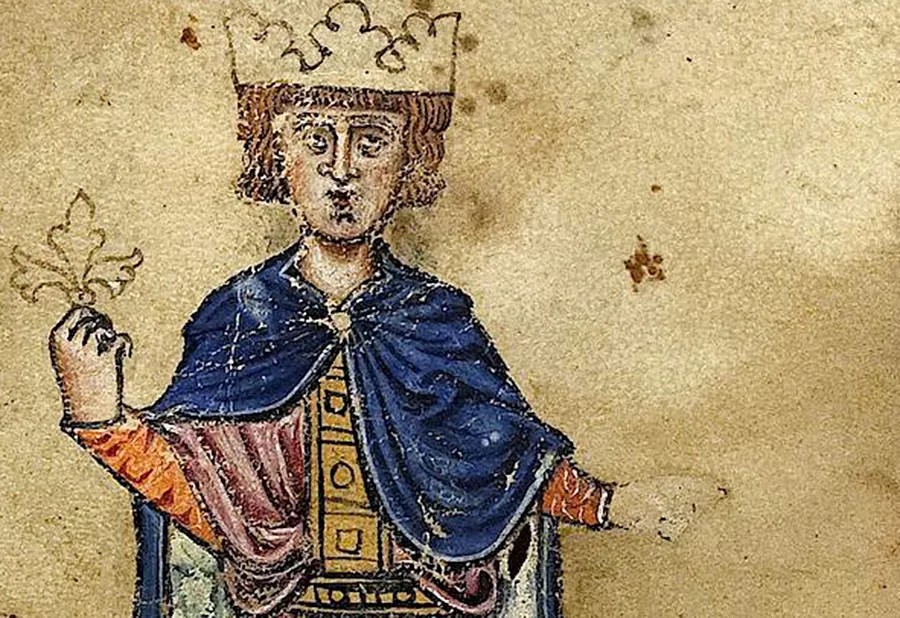Roman Emperor under Islamic influence: Who is Frederick II, Holy Roman Emperor?
Friedrich II of the Swabian Hohenstaufen dynasty, the famous ruler of the Holy Roman-Germanic Empire, known as the 'First Empire' (I. Reich) in German history, who lived between 1194 and 1250, was one of the most important emperors of the Middle Ages.

The fact that this empire, which was originally considered a German state, was called Roman-Germanic is one of the interesting events in history. This state, whose original German name was 'Heiliges Römisches Reich Deutscher Nation' (Holy Roman Empire of the German People), was founded on the concept of 'world sovereignty'. The admiration and longing of the nations in Europe for the Ancient Roman period, when the famous Julius Caesar reigned, was the fundamental element in the politics of the Franks and Germans.
After expanding the borders of his country, the Frankish King Charles I, known in history as Charlemagne, made an official application to Pope Leo III to initiate a formation under the name of the Roman Empire in order to revitalize the spirit of Ancient Rome and was equipped by the church with the duty of protecting all Christianity, and was founded in 800 by the First Holy Roman Empire. He was declared Emperor.
Frederick II (German: Friedrich; Italian: Federico; Latin: Fridericus; 26 December 1194 – 13 December 1250) was King of Sicily from 1198, King of Germany from 1212, King of Italy and Holy Roman Emperor from 1220 and King of Jerusalem from 1225. He was the son of emperor Henry VI of the Hohenstaufen dynasty and Queen Constance of Sicily of the Hauteville dynasty.
The imperial throne passed to the German lineage in 962. Pope John XII made his choice in favor of German King Otto I of Saxony, and after this date, all emperors until the 19th century, except the Salian, Luxemburg, and Lorraine dynasties, would be of German origin.
The title 'Kaiser' received by the emperors is derived from the word Caesar. With the unification of other large and small principalities and fiefdoms in the German geography under the leadership of the Kingdom of Prussia, the second empire period (II. Reich) took place from 1871 until the end of World War I. The nobles who governed this process belonged to the German Hohenzollern dynasty, and the empire was governed in the federal hereditary monarchy format.
Let's go back to Friedrich II. He lost his father, Henry IV when he was only two years old, and he grew up in the city of Palermo on this island with his mother, Princess Constanza of Sicily. When he arrived in Sicily, he was crowned King of Sicily when he was only two years old.
Since it was unreasonable for him to inherit the Roman Empire crown from his father due to his young age, Pope Innocent II declared Otto IV from the Braunschweig branch of the Welf dynasty as emperor. Meanwhile, the Kingdom of Sicily was governed through regents until Frederick II was old enough to take control. The king who took over the administration won the fight with Otto IV to seize the title of the Roman Empire and became the sole ruler of Germany and was entitled to wear the Roman crown. In addition, he received the title of King of Jerusalem by marrying Isabella Yolande II, daughter of King Jean de Brienne of Jerusalem.
Under this heading, we are interested in the intellectual personality of Friedrich II, who made the Hohenstaufen dynasty the ruler of Rome again, and his relationship with the Islamic world. We need to take a brief look at the history of Sicily in order to understand the environment that influenced Friedrich II, who spent his childhood in Sicily and was educated there.
Sicily was occupied by Byzantium during the reign of Caliph Osman in the 7th century. We see that Muslim dynasties such as Aghlabids, Fatimids, and Kelbis ruled here. When the Normans, who reached the Mediterranean in the mid-11th century, conquered the island, the administration passed to Christian Europeans.
Friedrich II, born in 1194, was educated by Muslim scholars educated in the school of the Sicilian Emirate, which collapsed about a century before his birth, and could speak Arabic fluently. 2. It seems that Friedrich's intellectual side was dominant throughout his life.
He was known as the "Stupor Mundi" ("wonder of the world") during his lifetime and is said to have spoken six languages: Latin, Sicilian, German, French, Greek and Arabic. By contemporary standards, Friedrich was far ahead of his time because he was keen to preserve science and the arts. He was the patron of the Sicilian school of poetry.
On May 17, 1198, when Friedrich was a 4-year-old boy, he was crowned King Friedrich of the Kingdom of Sicily in a ceremony held in Palermo.
His mother, Constanza, was in Palermo as Queen of Sicily. She served as regent until her son's adulthood.
Upon Constance's death in 1198, Pope Innocent III took over the task of becoming Friedrich's guardian and regent and governed Sicily until Freiedrch came of age. Friedrich was crowned King of Sicily on 17 May 1198.
In February 1249, Frederick II accused his prime minister and chief advisor, Pier delle Vigne, a famous poet and jurist, of embezzling money and property and dismissed him from his post. Some historians claim that Pier was preparing plans to betray the Emperor.
Despite the betrayals and disasters that occurred in the last years of his life, the emperor died peacefully on December 13, 1250, in the Castel Fiorentino castle in the Apulia region (located in the Torramaggiore lands), after a bout of dysentery, while lying in the robes of a Cistercian monk.
With the death of Conrad, his main heir, just four years after the death of Friedrich II, the Hohenstaufen Dynasty lost all political power in Western Europe.
